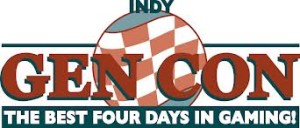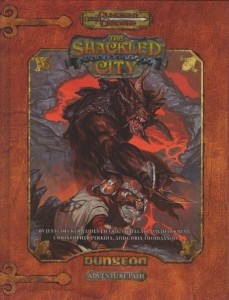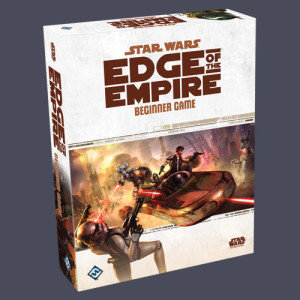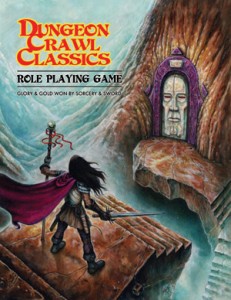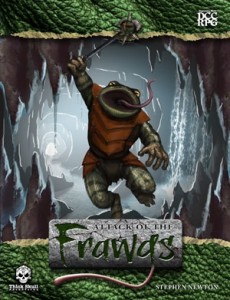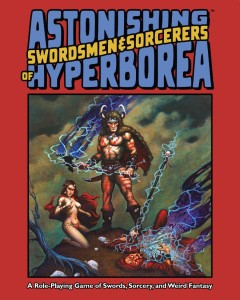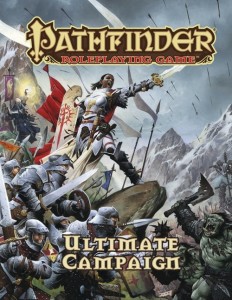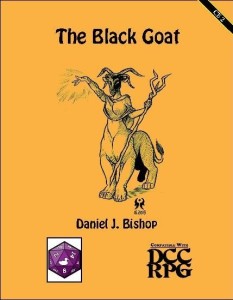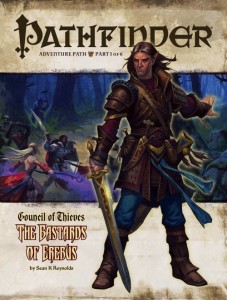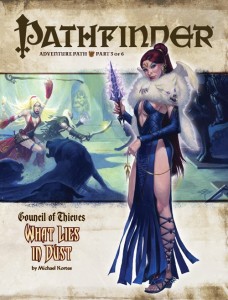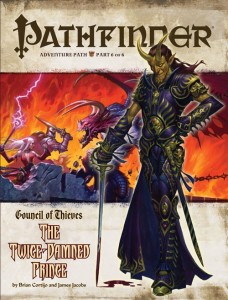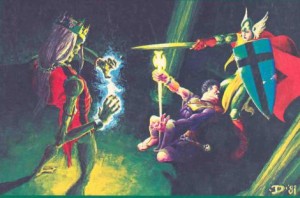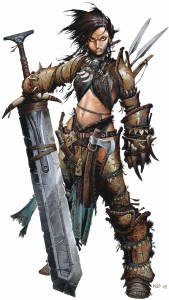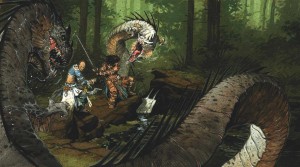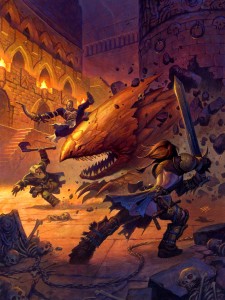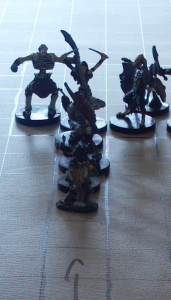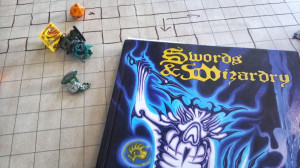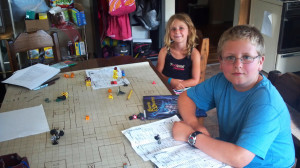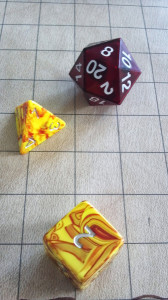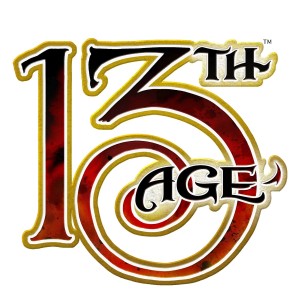 Recently I have been getting really into my new campaign using the excellent 13th Age, created by D&D alumni Rob Hiensoo and Jonathan Tweet.
Recently I have been getting really into my new campaign using the excellent 13th Age, created by D&D alumni Rob Hiensoo and Jonathan Tweet.
I have seen a number of comparisons between 13th Age and Dungeon World and quite rightfully so, they are both modern, innovative, narrative-driven games, that primarily focus on dungeon crawling and fantasy adventures.
As many of you will know, Dungeon World comes with a number of “principles” for the GM baked into the system. These principles are more like GM advice than actual rules, they don’t have any mechanical impact, rather they help you run a fun and exciting RPG. Most of them can be applied to any tabletop role-playing game, and I think many of them are particularly poignant to a 13th Age game.
One principle in particular that I want to talk about is: “Start and end with the fiction.” If you are a GM go ahead and write these words on an index card and place it face up on the table so everyone can see it, or pin it to your GM screen facing the players. You want everyone at the table to remember this point as you play.
What this means is that first and foremost you should describe what a character does in the fictional world and take your interpretation of the rules from that description, roll the dice to interact with the rules, and end with a fictional description of what happens.
Noi, the dwarven mercenary has managed to bust the door down of the chancellor’s office, and he’s looking for clues that implicate the slimy toads involvement with the Prince of Shadows. Aaron, the player playing Noi narrates how his character searches in the drawers, opens up the cupboards, looks behind paintings and generally ransacks the place. The GM declares that this definitely sounds like a Wisdom check and Aaron rolls the dice. He rolls a success! The GM describes how Noi finds a letter in a hidden drawer of the table, addressed to the chancellor by someone referring to themselves as “The Little Prince.” Noi is going to have to find a lot more than this if he is to bring this matter before the Dwarven King.
In this example we began with a fictional description and we ended with one, the rules simply provided a bridge between the two in the middle.
In many role playing games the player may have simply entered the office and declared he was using wisdom to look for clues and rolled the dice, but this rule exists exactly to prevent such a scenario. The player is instead encouraged to think about what his player is doing in the fictional world, and how he’s interacting with his environment. The benefit of this is it enhances the story told at the table, and also helps the GM decide on how best to use and interpret the rules.
Now this is particularly important to a 13th Age, a game that uses character backgrounds as a means of task resolution. When a character attempts to do something in the game that has dramatic consequences or a chance of failure, the GM does not have a hard and fast skill list to draw upon. He must think which ability score is most relevant to the task at hand, how difficult the task is going to be, and what kind of backgrounds may apply.
This process is made easier if the player fully narrates what his character is doing, as well as his intent. A canny player may even describe his action so he can take advantage of a background, and this kind of play should be encouraged. The player is taking the written words on his character sheet and bringing them to life by playing his character within the shared fictional world, and that sort of thing is really the whole point in a character-driven narrative-game.
Noi has been asking around the underbelly of the royal capital and he’s heard whispers that the head of one the thieves guilds calls himself the “Little Prince.” He’s managed to corner a lower member of the guild in a dark back alleyway, a sneaky little weasel that goes by the name of Regnar. Aaron describes how Noi grabs Regnars by his shirt, pulls him close enough so they are nearly touching and demands to know where the Little Prince’s hideout is. The GM declares that it sounds like a Charisma check but the Little Princes wrath is well known to those who rat on his gang, so the GM assigns this a hard difficult in an adventurer-tier environment. As it stands, none of Noi’s backgrounds apply to this check, so to get an advantage Aaron tells the GM that as he issues his threat, he mentions how he was expelled from the Royal Guard for the unlawful torture of the crown’s enemies. The GM likes it, and allows Noi to apply his +4 bonus from his “Former kings guard” background.
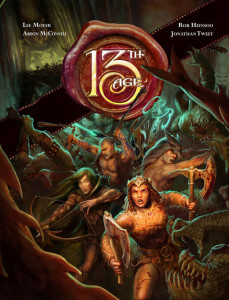 This principle also applies to combat and powers. Take a look at the 13th Age classes and you will notice a glaring difference between 13th Age and 4th edition D&D powers: you don’t get a little bit of italic flavor text in the power write-up. Does this mean that Rob and Jonathan play dry combats that don’t focus on narration? I don’t think so. If you have any doubt, listen to Rob running a 13th age game for the Geek Nation guys that is posted on the Pelgrane Press website.
This principle also applies to combat and powers. Take a look at the 13th Age classes and you will notice a glaring difference between 13th Age and 4th edition D&D powers: you don’t get a little bit of italic flavor text in the power write-up. Does this mean that Rob and Jonathan play dry combats that don’t focus on narration? I don’t think so. If you have any doubt, listen to Rob running a 13th age game for the Geek Nation guys that is posted on the Pelgrane Press website.
Rather I think they saved themselves some space in the book by making the assumption 13th Age is going to appeal to a group of creative people that are going to create their own descriptions anyway.
Again this relates to beginning and ending with the fiction, as a player, start your action in combat by describing how your power or spell looks and feels within the game world. This description need not even be consistent and may change based on the circumstances. Roll the dice and the GM will end the fiction by telling you the effectiveness of your action. Through his process, combat becomes a shared narrative experience between the players and the GM as they vividly describe what is going on back and forth.
How could Noi be so stupid? He had failed to notice three of Regnras cronies skulking in the shadows of the alley, and now they had him surrounded, wicked looking curved blades drawn. He loosed his shield and took a hard grip of his warhammer, today like just like so many others he would have to fight, or die. Aaron rolls the dice to attack the nearest thug and scores a hit, and he uses the natural result of 17 to activate his “Defensive Training” flexible power. He describes how he swings his hammer in a wide arc slamming it into the thug’s skull, then quickly retreats behind his shield, just like he used to all those years ago, when he and his men formed the shield walls in the Frost Giant Wars. His men were long dead, but still, these thugs were welcome to try and beak the wall.
Starting and ending with the fiction transcends numbers and stat blocks, and brings your games to life in a way that makes them become more akin to what you would see in an exciting and dramatic novel, or a movie.
James Ramage is a 25 year old gamer from Scotland, sailor of the high-seas and advocate of the “new school of gaming.” He started gaming in high school on bread-and-butter Dungeons and Dragons 3rd edition, back in the pre-revision days when choosing to play a ranger meant being a fighter that could talk to the odd sparrow, and very little else. He has just started a new campaign using the 13th Age, and is a strong supporter of Dungeon World, The One Ring RPG, Mouseguard and many other narrative-driven games.


